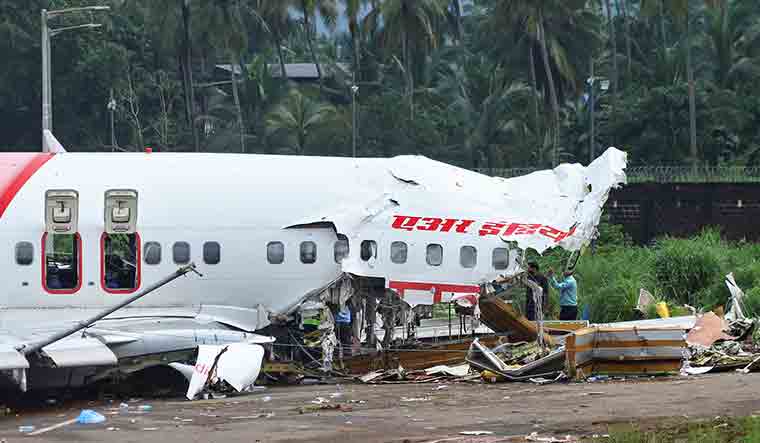As the blame-game over the Kozhikode airplane crash continues, aviation regulator Directorate General of Civil Aviation (DGCA) has decided to conduct safety audits of all airports in the country affected by heavy rain.
On Friday, an Air India Express plane from Dubai with 190 people overshot the tabletop runway while landing amid heavy rain at the Kozhikode airport, fell into a valley 35 feet below and broke into two, killing 18 people, including the pilots. The Boeing 737 with 190 people on board, overshot the rain-soaked runway, landed in tailwind, skid off the runway and broke in half.
In the aftermath of the accident, aviation experts had hit out against the DGCA for ignoring regular warnings about the safety of the airport. “We will conduct additional checks at major, busy airports across India that are affected by the monsoon rains,” DGCA head Arun Kumar told Reuters. “We will review everything - the condition of the runway, its incline, the lighting as well as drainage.”
Kumar said the special audit was over and above the DGCA’s routine checks and could cover a dozen airports including those in Chennai, Kochi, Trivandrum as well as Mumbai, all of which get heavy annual rains.
India's Aircraft Accident Investigation Bureau is leading the probe into the crash. Boeing and the US National Transportation Safety Board are also taking part in the effort, Kumar said.
“Once the findings are finalised, and if something is amiss we will take action to rectify it,” he said.
The crash was the worst in India in a decade, and the second fatal accident on a “table-top” runway which is typically found in high-altitude areas. In 2010, an Air India Express plane overshot a similar runway in the southern city of Mangalore. It fell down a hillside and burst into flames, killing 158 people.
A government-led committee looking into that crash had suggested installing an Engineered Material Arresting System (EMAS) on table-top airports. EMAS is a special surface usually installed at the end of the runway to quickly stop an aircraft.
However, a second committee suggested that if the runway safety area was increased at Calicut airport, the EMAS would not be needed, Kumar said.
Subsequently, the runway safety area was increased to 240 metres, more than the 90 metres prescribed by the International Civil Aviation Organisation, he said.


